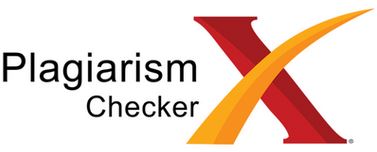PENGUKURAN EFISIENSI DAN EKUITAS MEREK SEBAGAI REFERENSI KONSUMEN UNTUK MEMILIH MINUMAN ENERGI
Abstract
The purpose of this research is to find out the level of relative efficiency on energy drink and the effects to the brand equity. As the analysis instrument, the writer uses an application from linear programming named as Data Envelopment Analysis (DEA) that has some advantages in measuring the level of relative efficiency for multiple input and output compared to any other methods. The next step is to discover the effects of the level of relative efficiency upon brand equity.
The writer takes seven different brands of energy drink as the sample in finding out the level of relative efficiency and 112 respondents in order to gain the value of brand equity upon those energy drinks. The result of the research reveals that there is one inefficient brand, whereas the hypothesis test shows that there is a connection between level of efficiency and element of equity (brand attractiveness, brand association, and perception quality), but the element of commercial advertisement has no effect to the efficiency. The yielded descriptive statistics shows that the inefficient brand surprisingly achieves higher value of equity than the efficient brands.
Implication from this research elucidates that there is a producer who sets a higher price in order to position the brand as the high quality product, likewise, advertisement also holds a great role in communicating a product to the public. The purpose of this research is to find out the level of relative efficiency on energy drink and the effects to the brand equity. As the analysis instrument, the writer uses an application from linear programming named as Data Envelopment Analysis (DEA) that has some advantages in measuring the level of relative efficiency for multiple input and output compared to any other methods. The next step is to discover the effects of the level of relative efficiency upon brand equity.
The writer takes seven different brands of energy drink as the sample in finding out the level of relative efficiency and 112 respondents in order to gain the value of brand equity upon those energy drinks. The result of the research reveals that there is one inefficient brand, whereas the hypothesis test shows that there is a connection between level of efficiency and element of equity (brand attractiveness, brand association, and perception quality), but the element of commercial advertisement has no effect to the efficiency. The yielded descriptive statistics shows that the inefficient brand surprisingly achieves higher value of equity than the efficient brands.
Implication from this research elucidates that there is a producer who sets a higher price in order to position the brand as the high quality product, likewise, advertisement also holds a great role in communicating a product to the public.
The writer takes seven different brands of energy drink as the sample in finding out the level of relative efficiency and 112 respondents in order to gain the value of brand equity upon those energy drinks. The result of the research reveals that there is one inefficient brand, whereas the hypothesis test shows that there is a connection between level of efficiency and element of equity (brand attractiveness, brand association, and perception quality), but the element of commercial advertisement has no effect to the efficiency. The yielded descriptive statistics shows that the inefficient brand surprisingly achieves higher value of equity than the efficient brands.
Implication from this research elucidates that there is a producer who sets a higher price in order to position the brand as the high quality product, likewise, advertisement also holds a great role in communicating a product to the public. The purpose of this research is to find out the level of relative efficiency on energy drink and the effects to the brand equity. As the analysis instrument, the writer uses an application from linear programming named as Data Envelopment Analysis (DEA) that has some advantages in measuring the level of relative efficiency for multiple input and output compared to any other methods. The next step is to discover the effects of the level of relative efficiency upon brand equity.
The writer takes seven different brands of energy drink as the sample in finding out the level of relative efficiency and 112 respondents in order to gain the value of brand equity upon those energy drinks. The result of the research reveals that there is one inefficient brand, whereas the hypothesis test shows that there is a connection between level of efficiency and element of equity (brand attractiveness, brand association, and perception quality), but the element of commercial advertisement has no effect to the efficiency. The yielded descriptive statistics shows that the inefficient brand surprisingly achieves higher value of equity than the efficient brands.
Implication from this research elucidates that there is a producer who sets a higher price in order to position the brand as the high quality product, likewise, advertisement also holds a great role in communicating a product to the public.
Keywords
Saintek; Ekonomi; Efficiency; Brand Equity; Reference
DOI: https://doi.org/10.18860/iq.v2i1.209
Editorial Office:
Management Department,
Faculty of Economics,
State Islamic University of Maulana Malik Ibrahim
Gajayana Str. No. 50 Phone. 082334248882
E-mail: iqtishoduna@uin-malang.ac.id
E-ISSN 2614-3437
P-ISSN 1829-524X

IQTISHODUNA under CC BY SA 4.0 Internasional.
Indexed by:
Member of:










